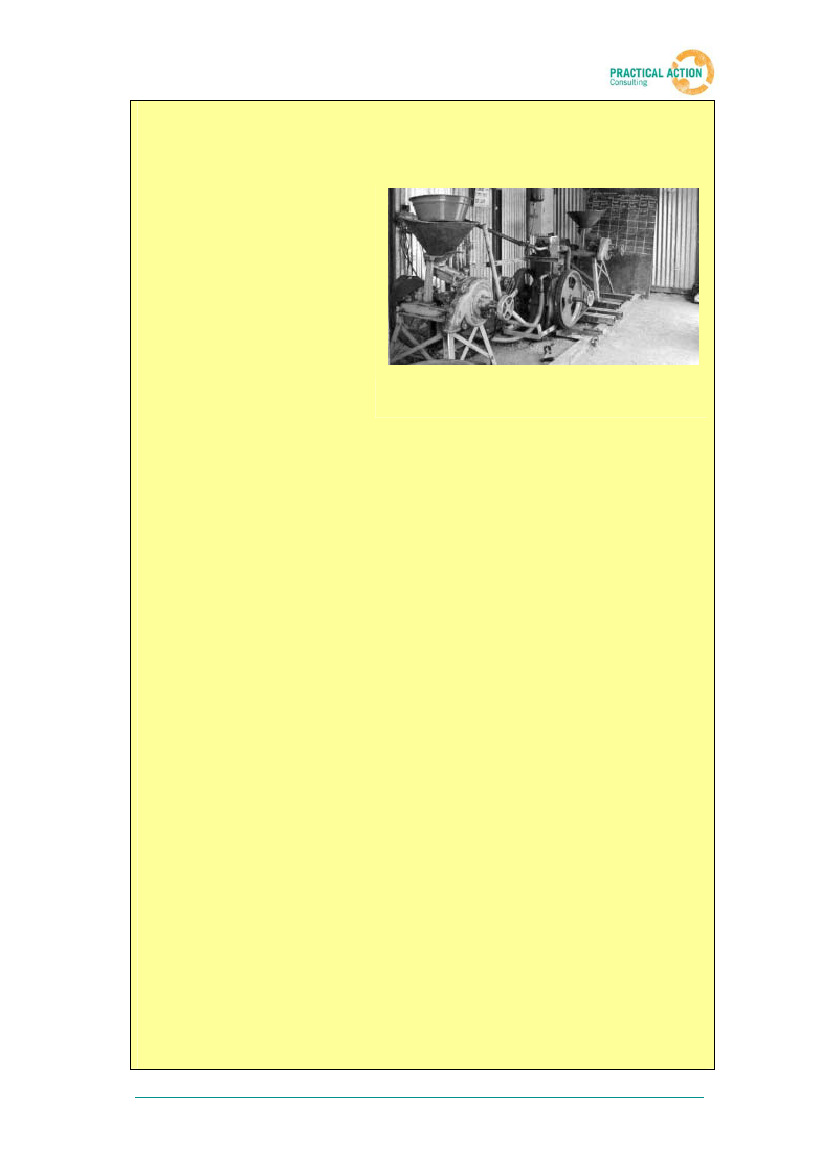
grinding, de-hulling, and water fetching. Existing grinding mills in the traditional private sector
were costly and their services not adapted to women’s need. In 1996, UNDP and the
Government of Mali began providing support to existing platforms and set out to install
diesel-fuelled multifunctional platforms across Mali.
Technology
The multifunctional platform provides
a source of mechanical and electrical
energy, powered by a diesel engine of
8 to 12 horse power (hp), that is
mounted on a chassis and to which a
variety of end-use equipment can be
added. The configuration of
equipment modules – such as
grinding mills, huskers, battery
chargers, electric water pumps,
vegetable or nut oil presses, welding
A MFP – engine and agro-processing devices
shown: UNDP
machines, carpentry tools, and mini electricity grids for lighting – is flexible and can be
adapted to the specific needs of each village. The advantages of the technology are its
simplicity, reliability and multiple uses. The MFP can also be powered by locally produced
jatropha vegetable oil. This can reduce cash outflow from the community and lower
exposure to diesel price fluctuations – particularly important for remote communities.
Delivery model
Installation of a platform is demand-driven. A duly registered women's association has to
request it, with the active support of the village community. Female ownership and
management is requirement to maintain the project’s explicit focus on rural women. Before a
platform is installed a feasibility study is undertaken using participatory approaches by local
project partners to ensure the firmness of the demand, ability of the villagers to pay for the
services, to inform the villagers about procedures, and to confirm technical opportunities.
The study informs project planning, allows a business plan to be developed, and provides
baseline data for monitoring and evaluation. After initial literacy training, the association
elects a women’s management committee, whose members are then trained in managerial
and entrepreneurial skills to ensure the technical and economic viability of the platform. Male
artisans in rural areas were trained in mechanical and electrical installation, maintenance
and welding so that they could take advantage of the energy provided to develop enterprises
that supported the maintenance of the platform through the paying of energy fees.
Finance mechanism
At an estimated cost, of US$4,500 for engine, rice de-huller, stone mill, and housing for the
platform as well as for feasibility studies, and trainings for women operators, the platform is
comparatively cheap to buy, install, maintain, and replace. Between 40 and 60 percent of
the cost is financed by the women’s association, often with financial support from the rest of
the community. A one-time subsidy of approximately US$ 2,500 is provided by the project
(about US$ 1,000 for the cost of studies and training and US$ 1,500 to subsidise the cost of
equipment and installation partially). Prices of the services are set to ensure the financial
sustainability of the multifunctional platforms as well as maximum affordability for local end-
users.
The women’s association operates the MFP and charges users, the vast majority of which
are women, for the services. Prices of the services are set to ensure the financial
sustainability of the multifunctional platforms as well as maximum affordability for local end-
Renewable Energy to Reduce Poverty in Africa
24